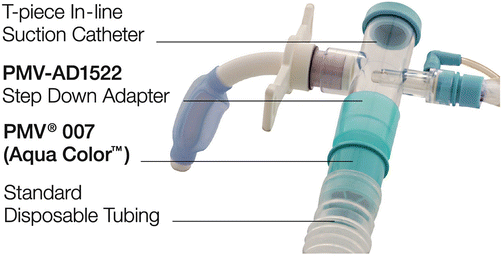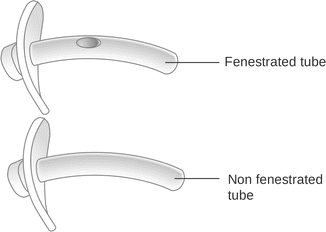Patient characteristics
Points
Total score
1-year mortality % (95 % CI)
Non-trauma
1
0
4 (0, 9)
Requiring vasopressors
1
1
28 (19, 37)
Requiring hemodialysis
1
2
43 (35, 51)
Platelet count ≤100
1
3
61 (52, 70)
Age 50–64
1
4–6
92 (84, 100)
Age ≥65
2
Place Tracheostomy
If it is consistent with the patient’s goals of care, placement of a tracheostomy is suggested for several potential benefits:
- (a)
Improve patient comfort
- (b)
Reduce need for sedation or analgesia
- (c)
Allow for easier oral care and suctioning
- (d)
Improve weaning from mechanical ventilation
- (e)
Facilitate earlier rehabilitation, communication, and oral nutrition
- (f)
Facilitate transfer to lower level of care
Only one small study has addressed the impact of tracheostomy on patient comfort [5]. Among 13 responders, 100 % felt the tracheostomy was more comfortable than an endotracheal tube. Tracheostomy use is increasing over time, likely as a result of accepted consensus recommendations and more convenient bedside approaches [6]. Despite this increase, the best approach to performing a tracheostomy remains unclear. The two most common approaches are percutaneous dilational tracheostomy, using a wire and a series of dilators (Fig. 28.1 ), and open surgical tracheostomy. There is little convincing data for the superiority of either approach, but a recent meta-analysis suggests that most outcomes favor percutaneous placement [7].


Fig. 28.1
Components of a percutaneous dilational tracheostomy kit (Permission for use granted by Cook Medical, Bloomington, Indiana)
Daily Tracheostomy Collar Trials
In the only randomized clinical trial of weaning approaches in PMV patients, patients admitted to a long-term acute care hospital (LTAC) were evaluated for readiness for weaning or liberation from mechanical ventilation [8]. On arrival, patients were placed on tracheostomy collar for up to 120 h. The 316 who developed respiratory distress during this screening time were randomized to either daily tracheostomy collar for up to 12 h with assist-control ventilation at night, or gradual reduction of pressure support ventilation. The group randomized to daily tracheostomy trials was liberated from mechanical ventilation 4 days faster than the daily pressure support reduction group (15 days vs 19 days, respectively). Based on this evidence, the best approach to ventilator management for PMV patients is to perform daily tracheostomy trials for as long as the patient can tolerate, with full ventilator support at night, until the patient remains off for 12 h for 2 consecutive days. Then, proceeding with longer tracheostomy collar trials is appropriate.
Early Mobility
All mechanically ventilated patients benefit from efforts to limit sedatives and facilitate early mobility during mechanical ventilation [9, 10]. Implementing protocols to institute early physical therapy is critical to improving outcomes for PMV patients. The ABCDEF bundle, supported by The Society of Critical Care Medicine’s ICU Liberation Collaborative, is an example of an approach to bundling evidence-based interventions for limiting sedation, preventing pain and delirium, and facilitating early mobility and communication with patient’s families [11–13].
Speaking Valve Trials
One of the most frustrating symptoms for PMV patients is difficulty with communication [14]. Lack of verbal communication causes frustration, powerlessness, and apathy. The design of some speaking valves (Fig. 28.2) permits them to be used in-line with mechanical ventilation, allowing for earlier initiation of communication. In the first study to date, the safety of in-line speaking valves was assessed compared to historical use of speaking valves after weaning from mechanical ventilation [15]. Patients were able to resume verbal communication an average of 9 days earlier, with no impact on duration of mechanical ventilation and no deleterious effects on patient care. Consideration should be given to earlier adoption of speaking valve placement with in-line compatible valves and ventilators.


Fig. 28.2
The Passy-Muir® speaking valve for use with tracheostomy, either in-line with the ventilator, or with an aerosol tracheostomy collar (Image courtesy of Passy-Muir, Inc. Irvine, CA)
Tracheostomy Removal
No data exists on the safest process of tracheostomy decannulation, so timing and methods vary by institution. Common techniques include gradual downsizing and use of fenestrated tracheostomy tubes (Fig. 28.3 ). In the gradual downsizing method, after the patient is successfully weaned from mechanical ventilation, the tracheostomy tube is downsized to a size 4 or 6 cuffless tube, and the tube is then capped with a speaking valve or other cover. Using a fenestrated tracheostomy tube, one can proceed directly from the initial tracheostomy tube to a fenestrated tube, and then proceed with capping trials. However, the fenestrations can become obstructed, either by secretions or against the posterior wall of the trachea. In this case, one would need to proceed as with a non-fenestrated tube.


Fig. 28.3
Fenestrated tracheostomy tube This image has been released as part of an open knowledge project by Cancer Research UK. If re-used, attribute to Cancer Research UK/Wikimedia Commons
Evidence Contour
Timing of Tracheostomy
One of the most controversial topics in caring for the critically ill is the timing of tracheostomy placement. Given the proposed benefits, clinicians might favor placing the tracheostomy as early as possible, but this should be balanced by limiting unnecessary tracheostomy placement. Despite more than 20 randomized controlled trials, there has yet to be a demonstrated benefit of early tracheostomy on mortality, and minimal to no benefit on duration of mechanical ventilation, ICU length of stay, or sedation use. In the largest clinical trial to date, nearly 1000 patients were randomized to either tracheostomy in the first 4 days, or after 10 days. While there was no difference in mortality in the study, the most remarkable outcome was that less than half of patients randomized to late tracheostomy ever received a tracheostomy. This suggests that half the tracheostomies placed in the early group were potentially unnecessary. The available evidence suggests that, despite our inclinations, there is little to no benefit to tracheostomy prior to 10 days of mechanical ventilation. Therefore, we suggest evaluation of the patient’s prognosis by the ProVent14 score at day 14, followed by a discussion with the patient and/or their surrogates regarding the expected outcome and the patient’s preferences and goals. That sets the appropriate stage for discussions of whether a tracheostomy is indicated.
Stay updated, free articles. Join our Telegram channel

Full access? Get Clinical Tree







